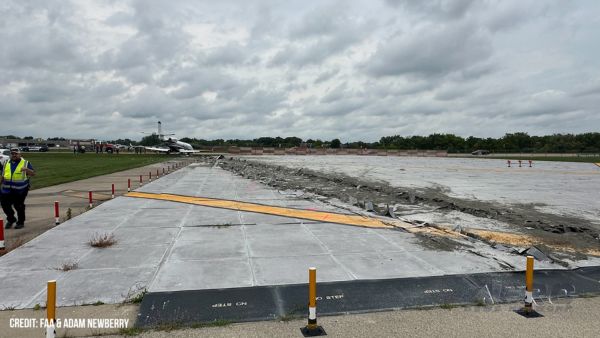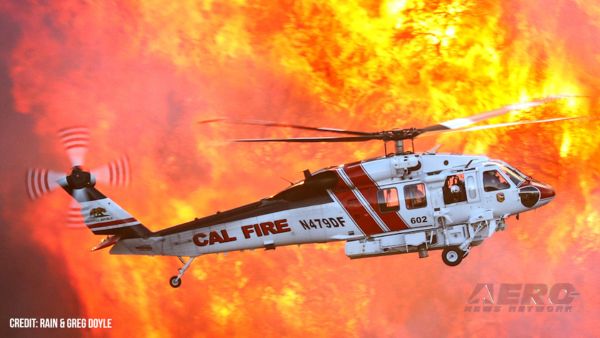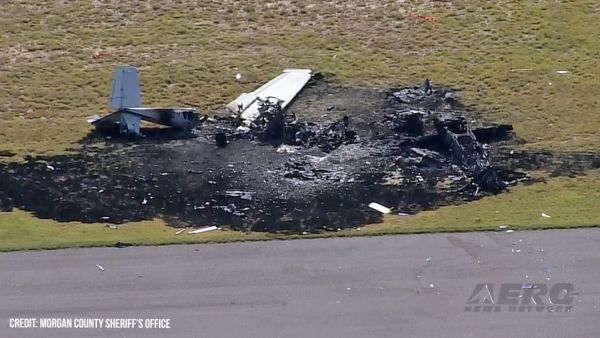The full report of the March 29, 2001 Avjet G-III crash at Aspen
(CO), in which all 18 aboard were killed, was attributed to the
flight crew, with help from confusing NOTAM information; and from
added stress to "get down," courtesy the local noise laws. Here's
the summary, as proffered by the NTSB. The entire report can be
seen at the cited website.
SUMMARY
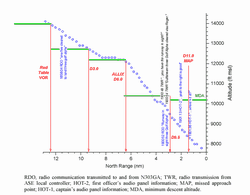 1. The flight crew made numerous
procedural errors and deviations during the final approach segment
of the VOR/DME approach to Aspen (ASE).
1. The flight crew made numerous
procedural errors and deviations during the final approach segment
of the VOR/DME approach to Aspen (ASE).
The flight crew crossed step-down fixes below the minimum specified
altitudes.
The flight crew descended below the minimum descent altitude
(MDA), even though airplane maneuvers and comments on the cockpit
voice recorder (CVR) indicated that neither pilot had established
or maintained visual contact with the runway or its
environment.
Contrary to the airplane manufacturer's procedures, the captain
deployed the spoilers after the landing gear had been extended and
the final landing flaps had been selected, and he set engine power
to 55 percent N2 rather than 64 percent N2.
When the airplane was 1.4 miles from the runway (about 21
seconds before the accident), the captain asked, "where's it at?"
but did not abandon the approach, even though he had not
identified, or had lost visual contact with, the runway.
Radar data and CVR comments indicated that, until the airplane
began turning to the left about 10 seconds before the accident, the
flight crew probably did not have the runway or its environment in
sight.
2. The crew demonstrated poor crew coordination
during the accident flight.
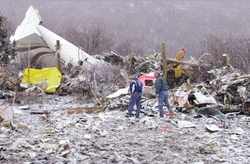 The captain did not discuss the instrument
approach procedure, the missed approach procedure, and other
required elements during his approach briefing because he expected
to execute a visual approach to the airport.
The captain did not discuss the instrument
approach procedure, the missed approach procedure, and other
required elements during his approach briefing because he expected
to execute a visual approach to the airport.
The captain and the first officer did not make required
instrument approach callouts, and the first officer did not call
out required course, fix, and altimeter information.
The flight crew did not discuss a missed approach after
receiving a third report of a missed approach to the airport and a
report of deteriorating visibility in the direction of the approach
course.
3. The flight crew was under pressure to land at
ASE.
Because of the flight's delayed departure from Los Angeles
International Airport and the landing curfew at ASE, the flight
crew could attempt only one approach to the airport before having
to divert to the alternate airport.
The charter customer had a strong desire to land at ASE, and his
communications before and during the flight most likely heightened
the pressure on the flight crew.
The presence of a passenger on the jumpseat, especially if it
were the charter customer, most likely further heightened the
pressure on the flight crew to land at ASE.
4. Darkness, reduced visibility, and light snow
showers near the airport at the time of the accident significantly
degraded the flight crew's ability to see and safely avoid
terrain.
5. The March 27, 2001, Notice to Airmen (NOTAM)
regarding the nighttime restriction on the VOR/DME-C approach was
vaguely worded and ineffectively distributed.

The NOTAM stated, "circling NA [not authorized] at night," but the
intended meaning of the NOTAM was to prohibit the entire instrument
approach procedure at night. Pilots might have inferred that an
approach without a circle-to-land maneuver to runway 15 was still
authorized.
If the FAA had worded the first NOTAM more clearly, it might
have made more of an impression on the first officer when he
received the preflight briefing from the Automated Flight Service
Station and might have affected the conduct of the flight.
The local controller could not notify the flight crew of the
NOTAM because the Denver Center had not sent a copy to the ASE
tower.
PROBABLE CAUSE
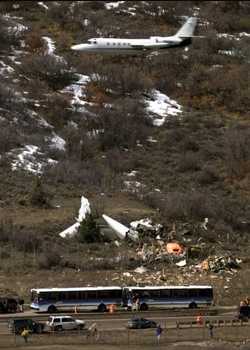 The National Transportation Safety Board
determines that the probable cause of this accident was the flight
crew's operation of the airplane below the minimum descent altitude
without an appropriate visual reference for the runway.
The National Transportation Safety Board
determines that the probable cause of this accident was the flight
crew's operation of the airplane below the minimum descent altitude
without an appropriate visual reference for the runway.
Contributing to the cause of the accident were the Federal
Aviation Administration's (FAA) unclear wording of the March 27,
2001, Notice to Airmen regarding the nighttime restriction for the
VOR/DME-C approach to the airport and the FAA's failure to
communicate this restriction to the Aspen tower; the inability of
the flight crew to adequately see the mountainous terrain because
of the darkness and the weather conditions; and the pressure on the
captain to land from the charter customer and because of the
airplane's delayed departure and the airport's nighttime landing
restriction.
 ANN's Daily Aero-Term (09.05.25): Resume Normal Speed
ANN's Daily Aero-Term (09.05.25): Resume Normal Speed Aero-News: Quote of the Day (09.05.25)
Aero-News: Quote of the Day (09.05.25) ANN's Daily Aero-Linx (09.05.25)
ANN's Daily Aero-Linx (09.05.25) Classic Aero-TV: Cruisin The Superfortress - ANN Rides Along
Classic Aero-TV: Cruisin The Superfortress - ANN Rides Along NTSB Prelim: Cirrus Design Corp SR22
NTSB Prelim: Cirrus Design Corp SR22




